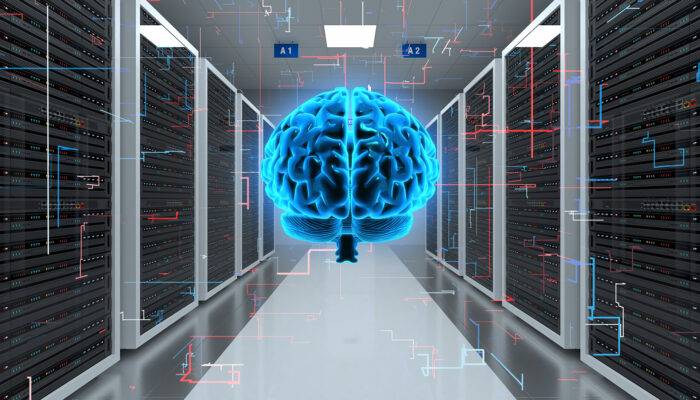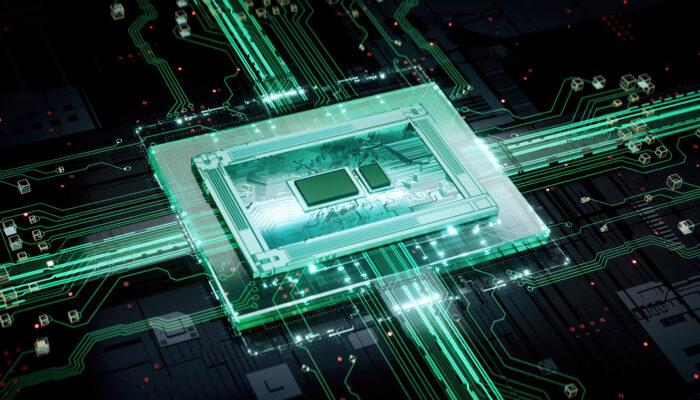Digital twin technology offers a way of revolutionising our approach to energy efficiency and will be a powerful complementary force alongside developments in the physical technologies driving the energy transition. These digital replicas of physical assets and processes, built on sophisticated mathematical models, go beyond static simulations by incorporating live data and allowing highly complex systems to be evaluated in real-time. The technology allows us accelerate design, predict failure & maintenance, and optimise the performance of energy assets much more effectively than conventional methods allow – digital twins have revealed that there is some low hanging fruit in the form of easily achievable energy efficiency gains, and will play a crucial role in achieving our net zero 2050 targets.
What’s next for digital twins in 2024?
Companies specialising in digital twin technology have attracted over $1.2bn* in funding over the past two years, with several companies securing funding rounds above the $10 million mark. Despite growing attention to the technology, the industry remains nascent, with few instances of rounds above $30 million.
Companies like Akselos and TWAICE, which have demonstrated practical commercial applications of their technology with large clients, have shown the value of the technology in solving critical climate and business issues.
With key players continuing to mature & demonstrate the impact of their technology against the backdrop of more favourable market conditions, we expect a more robust fundraising market with larger funding rounds as competitors build market share.
The companies poised to succeed in this market will be those with early commercial traction and seasoned management teams with domain expertise in their target markets. Such expertise is crucial given the complex nature of problems and solutions in play.
Energy generation and storage
Several pioneering companies are harnessing digital twin technology to revolutionise the optimisation of energy assets. The technology can be deployed throughout the entire lifecycle of an asset, enhancing design, predicting potential failures before they occur, and significantly prolonging asset longevity.
Akselos has developed advanced digital twin software that accurately simulates energy assets like offshore wind turbines based on over 15 years of research at MIT and a novel approach to finite element analysis (RB-FEA). Collaborating with industry giants like Shell and Lamprell, the company’s technology covers the entire asset lifecycle, from the initial phase of optimising asset design to advanced predictive maintenance that can significantly extend asset life. In early 2023, the company closed a $16.5 million funding round from investors, including AT Capital Group, Future Energy Ventures, Japan Energy Fund, and Shell Ventures.[1]
US-based Sentient Science’s digital twin technology focuses on the predictive health of wind and gas turbines, enabling a shift from reactive to predictive maintenance strategies. The company’s DigitalClone software eliminates the costs and the lengthy process associated with physically testing materials, components, and systems. It also provides short and long-term prognostics and life extension action recommendations for inventory, maintenance, servicing forecasts, and budgeting to operators. Sentient Science has received over $30 million in small business innovation research (SBIR) funding and extensive venture backing.[2]
German-based TWAICE is at the forefront of battery health monitoring, offering specialised analytics software for mobile and stationary applications. Serving automotive leaders such as Audi and Daimler, TWAICE’s platform accelerates development by simulating battery behaviour. It also mitigates risks through comprehensive health and safety data, enhancing profitability and operational efficiency throughout the battery’s lifecycle. TWAICE has raised funding of €75 million to date from Coatue, Energize Ventures, and other prominent investors.[3]
Across the channel is UK start-up QiO Technologies. QiO has developed a suite of Industrial IoT AI software products designed to help energy-intensive businesses reduce their greenhouse gas emissions and energy costs through digital twin technology and data-driven analysis of processes. The company closed a $10 million series B funding round in early 2023 to expand its operations across the US and Europe and enhance its product offerings.[4]
Energy transmission
Digital twin technology is also being applied to complex issues in energy transmission, tackling key challenges in energy infrastructure from network design to resilience requirements and maintenance challenges.
Sharper Shape Group, a leader in drone technology for power line mapping, raised $18 million in a Series B funding round in mid-2022. Their AI-driven cloud platform, CORE Living Digital Twin, creates a real-time digital replica of transmission networks. This helps utilities remotely inspect assets, reducing downtime and minimising faults. It also aids in managing vegetation growth, cutting maintenance costs by $200 per mile compared to traditional methods. Sharper Shape has secured lucrative contracts with Tier 1 utilities.[5]
Sydney-based Neara has developed a platform that creates 3D interactive models of critical infrastructure networks, raising a total of $35 million in Series B funding. The platform offers real-time visibility across networks, covering design, health monitoring, predictive maintenance, and vegetation control. Neara’s advanced platform integrates weather resilience and renewable energy sources seamlessly. With an additional $15 million secured in 2023, Neara plans to expand across the US and Europe.[6] It has also formed strategic partnerships with leading utilities like Southern California Edison, Scottish Power, and SA Power Networks to enhance market presence and operational reach.
In Europe, Plexigrid has developed an advanced grid analytics and monitoring solution that enables utility operators to forecast demand, pinpoint potential fault lines before they escalate, and assess capacity expansion strategies. The solution maintains a live digital twin of the grid to ensure optimal grid operations, which is crucial for accommodating the increasing complexity and integration of intermittent renewable energy sources. Plexigrid raised a second funding round of €4.5 million in April last year.[7]
Advanced Infrastructure is a promising start-up out of the UK. The company has developed a data-driven planning tool with digital twins to speed up low-carbon technology deployment and site selection for energy projects, including electric vehicle (EV) charging stations and solar installations. By leveraging digital twin technology, the company dramatically speeds up the identification of prime project locations and tailors network designs to accommodate local demand and capacity constraints, streamlining the expansion and optimisation of energy transmission infrastructures. In 2023, Advanced Infrastructure achieved a significant milestone by securing a portion of the £19 million Energy Entrepreneurs Fund (EEF), facilitated by the Department for Energy Security & Net Zero.[8]
Smart buildings
While low-carbon material technology and renewable energy generation have received significant investor attention, digital twin technology offers an asset-light approach to addressing the 30% share of global emissions generated by buildings. Several companies are applying the technology to modernise energy systems in buildings, improving energy efficiency without requiring time and capital-intensive system replacements.
Utah-based PassiveLogic has developed a scalable automation platform called the Hive to tackle the issue of outdated building management systems, which have remained unchanged for decades. The platform enables users to manage, operate, and control building systems autonomously to reduce energy consumption by generating a digital twin of a building that represents a live overview of the entire structure. Users create models using the company’s Autonomy Studio software through intuitive drawing, generating a physics-based digital twin using a unique language called Quantum. This is integrated into PassiveLogic’s Hive platform, enabling connectivity and control across building systems. The company has received $80 million in funding, including a $15 million strategic investment from Nvidia’s venture arm, nVentures in 2022.[9]
Myrspoven has built MyCoreAI, a cutting-edge AI-powered software designed to optimise building management systems, achieving an average energy consumption reduction of 20% without requiring new equipment installation. The solution adjusts HVAC systems and leverages digital twin technology to forecast energy usage, ensuring alignment with the most economically efficient periods. In February, Myrspoven raised €5.4 million to facilitate growth in its home region of Europe and globally.[10]
Dublin-based Invicara has developed Twinit, a customizable digital twin platform designed to improve energy and operational efficiency for various building types. Building owners and operators can use Twinit to better understand energy usage and efficiency based on real-time data and implement solutions enabling it to reach net zero targets, all using real-time data. The company received a $10 million investment from Kingspan Group in 2018.[11]
Another leading player in this space is Cohesion. The company has raised over $20 million from notable investors such as Frasers Property Group and Ken Griffin. Their intelligent building platform utilises digital twin technology to provide real-time insights into a building’s environment and health, including energy consumption, usage analytics, and maintenance optimisation. Additionally, the platform offers detailed analytics on ESG metrics, enabling building owners to understand their climate impact and achieve net-zero targets.[12]
Harnessing the power of digital twins for a net zero future
Advances in artificial intelligence and greater access to data are key enabling factors in the development of digital twin technology, addressing a market that is expected to grow at over 40% per annum to $130 billion by 2030[13]. As these trends continue to play out, we expect to see a substantial increase in the application of digital twin technology in the energy sector. The energy management system market alone (where digital twins are a key enabling technology) is expected to reach $60bn by 2025 [14], driven by rising investments in renewable energy infrastructure and the growing adoption of digitalisation in the energy sector. This growth reflects the significant demand for solutions that enhance operational efficiency, reduce carbon emissions, and support sustainable energy practices.
Digital twin technology has a pivotal role to play in enabling our path to net zero by tackling the core problem, our consumption of energy, at the source. The technology can unlock efficiency gains throughout the value chain from the design of energy assets to the optimisation of energy systems in operation and life extension of critical infrastructure. The core technology is applicable to a wide range of optimisation problems and as a software solution, can easily be deployed across a broad spectrum of project sizes at minimum incremental cost – this enables asset owners and operators of all sizes to enhance the efficiency of their asset base.
Furthermore, the ability of digital twins to simulate various scenarios and predict performance outcomes allows energy companies to make informed decisions that align with sustainability goals. Whether it’s optimising the performance of renewable energy assets, improving grid management, or enhancing energy storage systems, digital twin technology offers valuable tools for driving efficiency and reducing environmental impact.
This dual benefit of reducing environmental and economic burdens will continue to fuel significant market interest in the coming years, with investors keeping a close eye on companies with seasoned management teams, a proven track record of commercial success, and a clear path to scaling profitably.
Learn more about us.
View our transactions.










